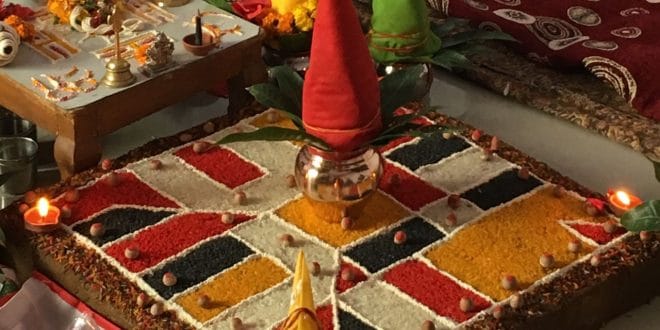If you’ve ever wondered how your home or workspace can influence your energy, happiness, and success, you’re not alone. Many ancient traditions offer guidance on creating balanced living environments, and Vastu Shastra is one of the most powerful systems in this area. Originating in India, Vastu Shastra is a centuries-old practice that focuses on aligning your surroundings with the natural elements to promote harmony, prosperity, and well-being.
Whether you’re designing a new home or looking to make small changes to improve your current space, this beginner-friendly guide will introduce you to the basics of Vastu Shastra and help you get started.
What Is Vastu Shastra?
Vastu Shastra (literally translating to “science of architecture”) is an ancient Indian system of architecture and design. It is based on the concept of balancing the five elements—earth, water, fire, air, and space—to create an environment that supports the flow of positive energy (or prana).
Much like feng shui in Chinese culture, Vastu emphasizes the importance of direction, placement, and structure in influencing various aspects of life, including health, wealth, relationships, and career success.
Key Principles of Vastu Shastra
To understand Vastu Shastra, it’s important to know its foundational principles. These include the five elements, directions, and the concept of energy flow.
1. The Five Elements (Panchabhutas)
Vastu is built around balancing the five natural elements:
- Earth (Prithvi): Represents stability and nourishment.
- Water (Jal): Represents clarity, calmness, and purity.
- Fire (Agni): Represents energy, passion, and transformation.
- Air (Vayu): Represents movement, flexibility, and freshness.
- Space (Aakash): Represents openness, connection, and cosmic energy.
A harmonious space ensures these elements are present and balanced.
2. Directions and Their Significance
Each cardinal direction is associated with specific energies and benefits. The placement of rooms and key areas in a building should align with these directional principles for optimal results.
- North (Kubera Direction): Linked to wealth and prosperity. Ideal for cash safes and business areas.
- East (Indra Direction): Linked to health and growth. The main entrance is often best placed in the east to welcome positive energy.
- South (Yama Direction): Focuses on stability. Bedrooms placed in the south promote a peaceful and grounded life.
- West (Varuna Direction): Represents fulfillment and completion. It is good for dining rooms or areas of relaxation.
Additionally, diagonal directions such as the northeast and southwest have special significance in Vastu, influencing areas like spirituality and security.
3. The Concept of Energy Flow
In Vastu Shastra, energy flows through the home in specific ways, often entering through the main entrance and moving throughout the space. If this flow is obstructed by poor layout or clutter, it can disrupt harmony and create negative outcomes.
How to Apply Vastu Shastra in Your Home
Here are some practical tips for implementing Vastu principles, room by room.
1. The Main Entrance
The main entrance is considered the “gateway of energy” in Vastu. It influences how positive or negative energy enters your home.
- Place the entrance in an east, northeast, or north direction if possible.
- Keep the area clean, well-lit, and free from obstructions.
- Avoid placing shoes, garbage bins, or clutter near the entrance.
Tip: Adding plants or artwork near the entrance can enhance the welcoming energy.
2. The Living Room
The living room is where family and guests gather, making it a hub for social energy.
- Place the living room in the north or northeast direction.
- Arrange furniture so that family members face east or north when sitting.
- Avoid heavy furniture blocking pathways or windows, as this can hinder energy flow.
Example: A clutter-free, open living room invites warmth and positivity, fostering stronger relationships.
3. The Bedroom
Your bedroom should promote rest, intimacy, and mental peace.
- The southwest corner is ideal for the bedroom, as it brings stability.
- Place the bed with the headboard facing south or east. Avoid placing the bed under beams or directly in line with the door.
- Use soft, calming colors and minimize electronic devices to encourage relaxation.
Tip: Mirrors should not face the bed, as they can disturb restful sleep.
4. The Kitchen
The kitchen is associated with fire energy and plays a vital role in health and nourishment.
- Ideally, the kitchen should be in the southeast direction, where fire energy is strongest.
- Place the cooking stove or oven facing east. Avoid having the stove and sink directly next to each other, as water and fire elements should remain balanced.
- Use natural lighting and ventilation to maintain a healthy atmosphere.
5. The Bathroom
Bathrooms are associated with the water element and can influence both health and wealth if not placed correctly.
- Place bathrooms in the northwest direction to balance water flow.
- Ensure proper drainage and ventilation to prevent stagnation of negative energy.
- Keep bathroom doors closed when not in use.
Common Vastu Remedies for Existing Homes
If your home’s layout doesn’t align perfectly with Vastu principles, you can implement simple remedies to improve energy balance:
- Mirrors: Place mirrors strategically to reflect light and enhance the sense of space. Avoid placing mirrors directly across from entrances or beds.
- Crystals and Energy Stones: Use crystals such as clear quartz or citrine to amplify positive energy in key areas.
- Plants: Add plants like tulsi (holy basil) or money plants to purify the air and bring vitality. Avoid thorny plants like cacti indoors.
- Colors: Incorporate colors that align with the energy of each room. For example, green and blue promote calmness in bedrooms, while red or orange energizes the kitchen.
The Benefits of Vastu Shastra
Implementing Vastu Shastra can lead to various benefits, including:
- Improved Health: A well-balanced home supports physical and mental well-being.
- Enhanced Relationships: Positive energy flow encourages harmony among family members.
- Career and Financial Growth: Proper placement of key areas, such as the main entrance and office, can attract opportunities and wealth.
- Greater Peace of Mind: An organized, clutter-free environment fosters mental clarity and reduces stress.
Is Vastu Shastra Scientifically Proven?
While Vastu Shastra is rooted in spiritual and cultural traditions, modern research has explored how environmental factors—such as natural light, ventilation, and room layout—impact well-being. Although it may not have the same scientific backing as architecture or engineering, many people find that Vastu principles enhance their quality of life through better organization and energy alignment.
Vastu Shastra is a powerful tool for creating a harmonious and balanced living space. By understanding and applying its principles, you can enhance your health, relationships, and success. Whether you’re building a new home or making small adjustments, Vastu offers practical and symbolic guidance for improving your environment.
Are you ready to harmonize your space with Vastu Shastra? Share your thoughts and experiences in the comments below!
 Lifeved The Keys to a Better
Lifeved The Keys to a Better


 by
by